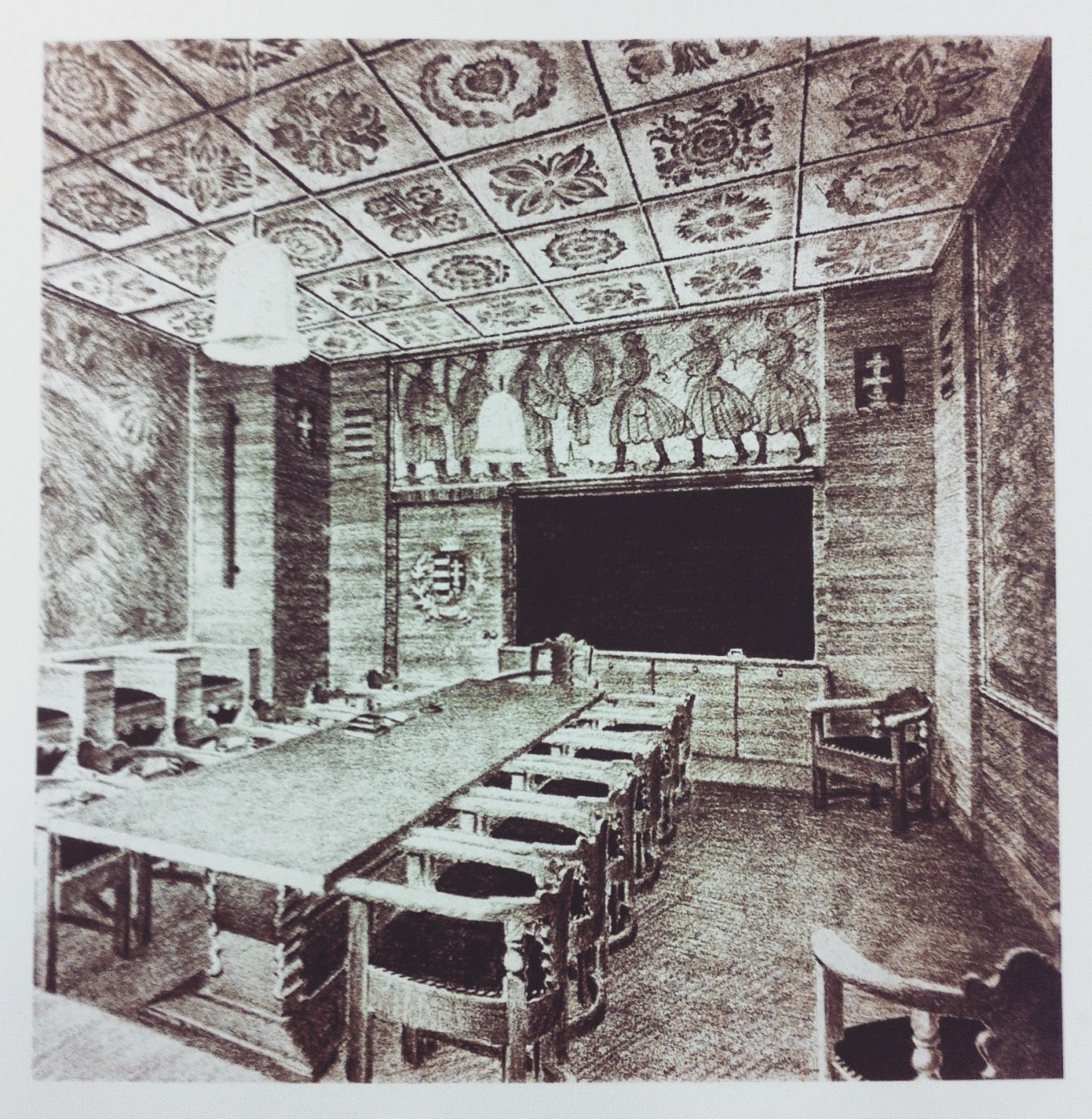The Hungarian Room that exists today combines folk artistic traditions with a visual timeline to narrate the nation’s complicated history. The Hungarian Committee formed in 1927, and with great enthusiasm became the first committee to put forward a donation to the Nationality Room Council and grew to include Magyars from surrounding Pittsburgh suburbs. Minutes from meetings reveal their eagerness demonstrate their historic achievements in an open dialogue between themselves and a transcultural audience.
National symbols of Hungary, such as the Holy Crown of St. Stephen, coupled with the inclusion of folk motifs, primary references to historical agriculture products, illustrated by decorative tulip carvings, paprika red coloring the ceiling, complimenting the warmth of a tobacco stained oak veneer. The need to define their target audience, either the local ethnic community or the general city public, would consequently determine the form of the room. The Hungarian Room seeks a comprise between an aesthetic interpretation of cultural heritage recognizable to a fellow Magyar, and an educational presentation in order to educate students of Hungary’s complicated past. According to correspondence, the Hungarian Committee seeks to install a variety of objects to represent the various backgrounds that made up Hungary over a long period time, including translations of Hungarian literature, musical scores, reproductions of historic paintings, and a painted panel depicting figures important in shaping Hungary’s complicated past.. I will explore why these objectives were not met at the room’s dedication in 1939. Following the later addition of the stained glass windows in 1956, the room shifts from an inclusive, cultural perspective to a broader, informative narrative of Hungarian national history, geared towards a universal audience. What obstacles prevented the Hungarian committee for constructing an image of their cultural identity geared towards a multicultural audience in their initial actualization of the room, and through what modes were they able to rally up morale and support in order to execute the later addition of the stained glass windows?
For more information about Melissa, click here.

